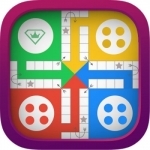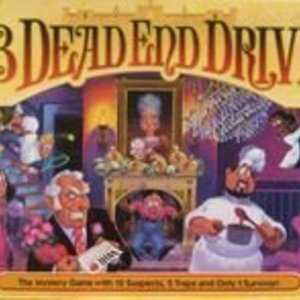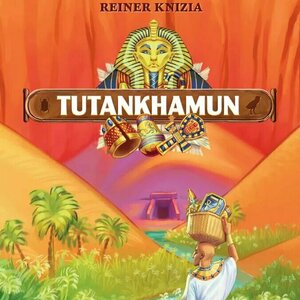
Touchgrind HD
Games and Entertainment
App
The smash hit Touchgrind is available for your iPad! Now with an extended view of the park and a...

Stretch Music
Music
App
Stretch Music, powered by Tutti Player, is an interactive music album. This interactive version of...

International Soccer Champions '16
Games
App
Have a ball playing soccer on your mobile device with International Soccer Champions '16. Unlock...
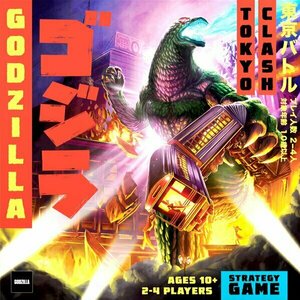
Godzilla: Tokyo Clash
Tabletop Game
In Godzilla: Tokyo Clash, you play as the Earth's most fearsome Kaiju — Godzilla, Mothra, King...

ScoreKeeper Netball PRO HD
Sports and Health & Fitness
App
ScoreKeeper Netball is a Netball coach's or Team managers best friend. Keep score of the game,...
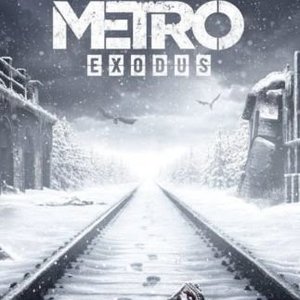
Metro Exodus
Video Game Watch
Metro Exodus is a first-person shooter game with survival horror and stealth elements. Set in the...
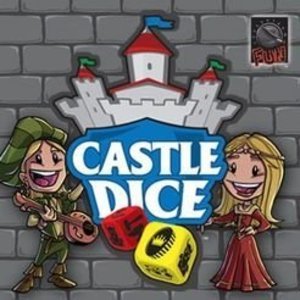
Castle Dice
Tabletop Game
Castle Dice is a light dice-drafting game in which the players have been ordered by the king to...
Matthew Krueger (10051 KP) rated 13 Dead End Drive in Tabletop Games
Jul 17, 2020 (Updated Jul 18, 2020)
13 Dead End Drive is a murder-themed board game originally from Milton Bradley. Released in 1993, it was followed in 2002 by a sequel, 1313 Dead End Drive. Currently, Winning Moves Games USA Winning Moves publishes the game in the USA.
The story behind the game involves the death of a wealthy old woman triggering a feud over her will. The players utilize traps located on the game board, which represents a mansion, to kill characters controlled by other players in order to claim the estate for themselves.
The Gameplay:
At the start of gameplay, players are dealt "Character cards" which correspond to matching pawns on the board. Since there are 12 characters, it is often the case that players control more than one character. However, which player controls which character is not revealed. Along with the character cards, there are also Portrait Cards, which determine who the current favorite for the inheritance is, and Trap Cards, which are used to spring traps and knock off other players.
During each turn, a player rolls two dice and moves two pawns, one pawn for each die. It is legal for players to move a pawn that is not theirs in order to bring it closer to or onto a Trap Space. All pawns must be moved off the red chair spaces before any pawns can be moved a second time or onto a trap space. If a pawn is moved onto a trap space by exact roll only, the player must have the corresponding trap card in his or her possession in order to spring the trap. Springing traps is not mandatory, however. After that, play proceeds on to the next player. A pawn can not pass through or land on the same space as another pawn during the same turn.
During the game, a Portrait Card is displayed in the picture frame above the fireplace. That character is now the current favorite to inherit the fortune. At that moment, for all intents and purposes, that character is now marked for death and must try to escape the mansion before he or she is either knocked off or the portrait changes (see "Special Spaces and Rules" below).
Also, during the game, a Detective is waiting outside, slowly advancing toward the front door. His arrival signifies the reading of the will and the announcement of the winner. The Detective can only move one space at a time, and only when a Detective Card (hidden inside the Trap Card pile) is drawn. There are 13 steps to the front door. If the Detective makes it to the front door before all other characters have been eliminated, the game is over.
Ways to win:
There are three ways to win 13 Dead End Drive:
Be the last character alive.
Escape the Mansion while your character's picture is displayed in the Picture Frame.
Have your character's picture displayed in the Picture Frame when the Detective reaches the front door.
Traps:
13 Dead End Drive has five different booby traps that are used to dispose of other characters. In the story of the game, the traps are designed to make deaths appear accidental. The traps are the Chandelier, the Bookcase, the Stairs, a Statue in a suit of armor, and the Fireplace: if a pawn has the misfortune to land on the trap space in front of or under one of these traps, the Trap card is played and the trap is sprung in the following ways:
To activate the Chandelier, flip a switch in the music room that drops the chandelier onto the pawn, eliminating it from play.
To activate the Bookcase, move that pawn up onto the top of the ladder and rest that pawn on top of the bookcase in the library, and flip a switch that will send the pawn flying back onto the board and eliminating it from play.
In order to activate the Stairs, a player can move it up onto the top of the stairs in the hall and flip a switch that will violently toss the pawn back down the stairs and onto the board, resulting in its elimination.
To activate the Statue, in the gallery, a player can flip a switch that will send a statue in a full suit of armor crashing down onto the pawn.
The Fireplace is activated in the dining room when a player flips a switch that will send the pawn flying backwards and into the figurative fire, though the box describes it as a Trap Door.
When a player moves a pawn onto a Trap Space, they must draw a card from the Trap Card pile (if they do not already have the matching trap card in their possession). If the player draws the matching Trap Card, they can either play it immediately or hold the card for future use. If the player does not have the matching Trap Card, the trap cannot be sprung, but the card can be saved for future use. There are also "Wild" Trap Cards which permit all traps to be used anytime a pawn is in that space. If, however, the player draws a Detective card, the Detective is moved one space forward, but the player is permitted to draw another Trap Card before ending the turn.
Once a trap is sprung, that pawn and the matching Character Card are laid down on the "Discard" pile on the board (the couch). If during the course of play, a Portrait Card comes up for a character that has been knocked off, that card is immediately taken down and placed on the "Discard" pile, revealing a new Portrait. The Portrait cards are shuffled at the beginning of gameplay and concealed by an "Aunt Agatha" portrait card to hide the known deck order.
Special spaces and rules:
Rolling Doubles: If a player rolls doubles that player chooses whether or not to move the current Portrait card to the back of the pack to reveal new Portrait. The player then has the choice of:
Moving one pawn the total number of spaces shown on the dice, or
Moving two pawns, one pawn for each die.
Secret Passages: On the board are special spaces that represent "Secret Passages."
Any character can enter any secret passage at any time, regardless of whether or not it is by exact roll. Moving from one secret passage to another counts as one space move for a character. Secret passages are often used to bring opponent's pawns closer to traps or to bring a player's own pawn closer to the door.
Bluffing: Bluffing is permitted in "13 Dead End Drive." In terms of strategy, a player may move their own pieces towards or even onto trap spaces in an attempt to fool opponents. Even if that player has the matching trap card for the space their own character is on, they do not have to play it. Instead, they can pretend that they do not have the correct card and draw another one. If they happen to draw the right trap card, they can pretend that the card is the wrong one, and play continues as normal.
Its a excellent game, if you like clue than you will love this game. Its a excellent bluff deduction murder mystery game.
Purple Phoenix Games (2266 KP) rated Tutankhamun in Tabletop Games
Jul 9, 2021
In Tutankhamun, players take on the roles of Egyptian priests attempting to cleanse their souls by gifting the sarcophagus with relics found along the Nile River. The priest who can cleanse their soul quickest will be proclaimed the next High Priest and winner of the game!
DISCLAIMER: We were provided a copy of this game for the purposes of this review. This is a retail copy of the game, so what you see in these photos is exactly what would be received in your box. I do not intend to cover every single rule included in the rulebook, but will describe the overall game flow and major rule set so that our readers may get a sense of how the game plays. For more in depth rules, you may purchase a copy online or from your FLGS. -T
To setup, place the King Tut sarcophagus on the table somewhere inside the box bottom. From this starting place (or you could place these components last I suppose), begin the laborious job of creating the Nile from the trapezoidal Relic TIles. This part took me a good several minutes each game. Place out the Underworld Mat near the start of the Nile, and place upon it the two Guardian Statue standees. From there give every player a reference card, have them choose a player color, place their boats at the start of the Nile, and Canopic Jar scoring markers on the appropriate space along the box bottom score track. The game may now begin!
Tutankhamun is played in turns starting with the starting player and proceeding clockwise. The starting player will choose ANY Relic Tile to collect and move their boat to that location. Once collected, the player will check to make sure there are still matching Relics along the Nile. If so, then play continues to the next player. If the active player had collected the last Relic of that type still active in the game, then the Relic type is scored.
Each Relic Tile features art of a Relic, a God, or a Scarab Ring. Relics come in sets, and when the final Relic of its type is collected, scoring immediately follows. Whichever player possesses the most Relic Tiles of the one being scored will earn points (or rather, negative points, as the priests are trying to cleanse their souls down to the winning score of zero) equal to the number printed on the tile. That number stands for the score earned as well as the number of Relics of that type in the game. The player with the second most Relics of the scored type will score half the number printed on the tile. All others do not score.
God Tiles feature art of one of five ancient Egyptian Gods: Osiris, Isis, Ra, Thoth, and Horus. Each of these Gods provide the collecting player with special powers to be used during the turn, and are always positive for the player.
Finally, Scarab Ring tiles are special in that they feature no number upon them. There are 10 tiles in the game, and as soon as a player collects one they immediately score one point (or one negative point). These tiles are not thrown into the box bottom, as the other scoring tiles are once scored, but are kept with the players to be scored at the end of the game. The player holding the most Scarab Tiles scores five negative points.
Any tile along the Nile that has been passed by all players is deposited onto the Underworld Mat and not added to the box bottom with the King Tut sarcophagus. Tiles may still be collected from the Underworld by permission of the Gods being collected in-game. Whichever priest is able to dwindle down their points and cleanse their soul first will win the game and become the next High Priest of Egypt!
Components. I am more and more becoming a fan of everything 25th Century Games is putting out. This is certainly no exception. I have seen photos of the original versions of this game, entitled Tutankhamen (with an E at the end instead of a U) and this game was certainly begging for a renovation. All the components have updated art, more vibrant colors, and the game even includes luxurious (and completely unnecessary) components. These are the very cool, but very unnecessary King Tut sarcophagus, and the Guardian Statue standees that add nothing to the gameplay but definitely help set the mood and theme. That all said, this version looks amazing on the table and has nearly infinite setup configurations!
What I like most about the game is the fact that on a player’s turn they can literally move forward to ANYWHERE along the Nile to gather whatever Relic they wish. They can pass up a tile or twelve along the way to snatch exactly what they want. However, the quicker a player reaches the sarcophagus does not automatically make them the winner. No, they still need to reduce their soul spirit score to zero in order to win (or be closest by the time all players reach the final spot). Conversely, dilly-dallying along the River just picking up every available tile also will not guarantee a victory. Specializing in a select few items may be the ticket to a victory, or setting oneself to win a couple types and win runner-up on the remainder may be a great path to victory.
Unlike many other games with this lazy race mechanic, the player furthest back does NOT get to keep taking turns to catch up (I’m looking at you, Tokaido), but rather just means that player has many more options ahead of themselves than the other players have. This is very interesting to me, and definitely something worth exploring more. It makes for tough turns when players have to really crunch which options are best for them: take the tile right ahead of them, diversify vs bolster the collection, or hate block another player by taking what you know they need. Ahh, so beautiful are the choices given!
At the end of the day (and this review), Purple Phoenix Games gives this one an Obama-meme-where-he-is-drinking-a-beer-and-giving-a-thumbs-up 5 / 6. I would certainly not have purchased this game in its original form had I seen it in a game store. However, with the changes made to make it more pretty, I would have given it a chance. I am so very glad I have the opportunity to play this a lot, as I can see this getting to the table allllllll the time. It is right up my alley, and I place it high among other Knizia games. Long live King Toot!!
